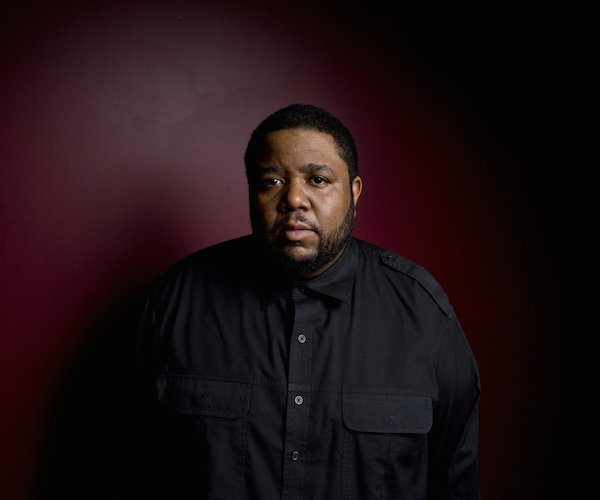Jazz CD Review: Tyshawn Sorey’s “Pillars” — Like Nothing You Have Heard Before
Tyshawn Sorey flies far from his innovative masters, such as Roscoe Mitchell and Anthony Braxton. I hardly expected that the result would be so mesmerizing and alive.
Tyshawn Sorey, Pillars, Firehouse 12 records. 3 CDs (Also available as 2 lps).

Tyshawn Sorey — his music is entrancing yet intellectually vigorous. Photo: Bandcamp.
By Michael Ullman
Drummer and composer Tyshawn Sorey describes Pillars, his fascinating and ambitious new composition, with its references to Tibetan rituals, Stockhausen, and Anthony Braxton, in this way: “This isn’t goal-oriented music—it has a gradually evolving, flowing quality. Different players lay out and join in as the piece evolves, and listeners can dip in and out of the record similarly.” There are solo passage, duets, groupings, and re-groupings, all presented in a manner that leaves plenty of space. In fact, silence would seem to be among the significant instruments in Pillars.
This not to say there aren’t recognizable musical lines and climaxes. The players include Stephen Haynes on trumpet and related instruments, Ben Gerstein on trombone and melodica, Todd Neufield and Joe Morris on guitars (Morris also appears on bass), and bassists Carl Testa, Mark Helias, and Zach Rowden. Sorey himself plays percussion, of course, but also some trombone and the Tibetan dungchen (It’s yards long and looks like an inflated Alpine horn. It sounds like someone is moving furtniture). The band is bottom heavy: Sorey has a bass drum that must fill a room. (It will help mightily to have an audiophile’s system when hearing Pillars.)
The truth is, I am can’t stop listening to my downloads of the beautifully recorded three compact disc set. (There is also a two lp version that must be shortened version of the discs. The order of the sections are re-arranged as well on the lps.) Although Sorey’s music “avoids a particular linear narrative,” and is presented in three continuous sets of 75 or more minutes each, to my ears each set is organized around recognizable sections, with climaxes, variations in intensity, and various textures.
Clearly, Sorey is active as a conductor, cuing in new instruments and bringing sections to a close. Every instrumentalist tests the limits of his instrument: the basses are plucked, but also bowed to the point that they screech. One hears the full Jack Teagarden trombone sound, but also quacks and squeaks emitted by mouthpieces. There are electronic sounds and well, sounds I frankly can’t identify. To my ears the music is entrancing yet intellectually stimulating. Listening to Sorey’s music is like watching a complex game whose rules are constantly changing as we watch. Sorey suggests, or at least allows for, dipping into the music and leaving: I found each section ending before I knew it.

The composition begins with an almost four minute drum roll: Sorey’s snare drum is set back in space. One hears a kind of metallic echo, but it is not a static moment. Sorey surges and recedes, finishing up with a kind of intense crescendo before he stops, suddenly. That’s one of the distinctive qualities of this music: even what might have been uniformity are alive with change, even pulsation. There may be no (or few) written melodies, but what given material there is elaborated via melodic improvisations. In this case, after a pause, Sorey makes a quiet splash on cymbals and Todd Neufield enters, improvising quietly on acoustic guitar. The piece finally becomes a duet, with Sorey playing cymbals and lightly on tomtoms and bass drum behind his guitarist. At one point, Neufield plays so quietly he seems to disappear, and then Sorey takes over. Each note becomes a kind of event.
That’s a characteristic of this music. It’s not always quiet: there’s a climax in the section between guitar and percussion at about 14 minutes, once the guitar has become agitated and then increasingly dissonant. The section seems to end at 16 minutes with a dramatic strum. And that’s another fascinating characteristic of Sorey’s music: the ending of one section becomes the beginning of the next — not seamlessly, but inventively. In this case, the next section begins with a series of strummed and bowed sounds with echo effects that make for a perfect logical progression from the strummed climax we just heard. Elsewhere, the dungchen is used to signal an ending, such as around minute 32 of the second set.
The last of the “Pillars,” part three, is equally varied and interesting. Towards its end, the two horns play long tones in a continued diminuendo that slowly comes to a halt. Suddenly we hear what sounds like a lively set of bongos. Sorey is soloing wildly, and the horns and other instruments roar into a blaring group improvisation unlike any I have heard before. There is, in fact, little here that sounds like something I have heard before. Sorey flies far away from his innovative masters, Roscoe Mitchell and Anthony Braxton among them. I hardly expected that the result would be so mesmerizing and alive.
Michael Ullman studied classical clarinet and was educated at Harvard, the University of Chicago, and the U. of Michigan, from which he received a PhD in English. The author or co-author of two books on jazz, he has written on jazz and classical music for The Atlantic Monthly, The New Republic, High Fidelity, Stereophile, The Boston Phoenix, The Boston Globe, and other venues. His articles on Dickens, Joyce, Kipling, and others have appeared in academic journals. For over 20 years, he has written a bi-monthly jazz column for Fanfare Magazine, for which he also reviews classical music. At Tufts University, he teaches mostly modernist writers in the English Department and jazz and blues history in the Music Department. (He plays piano badly.)
